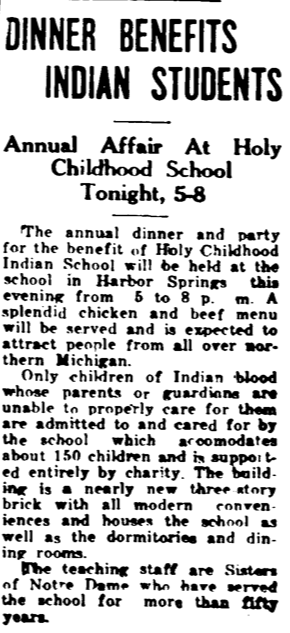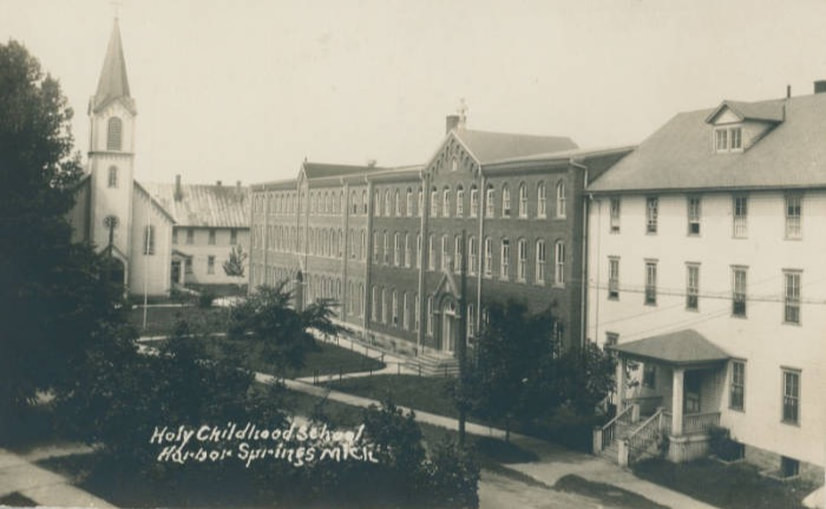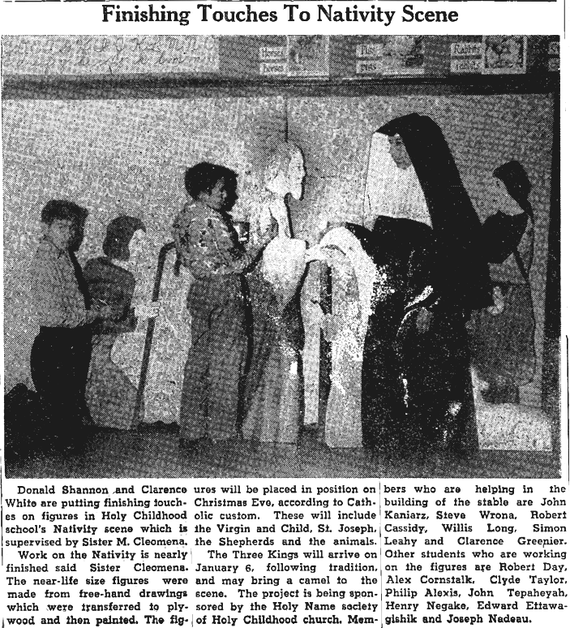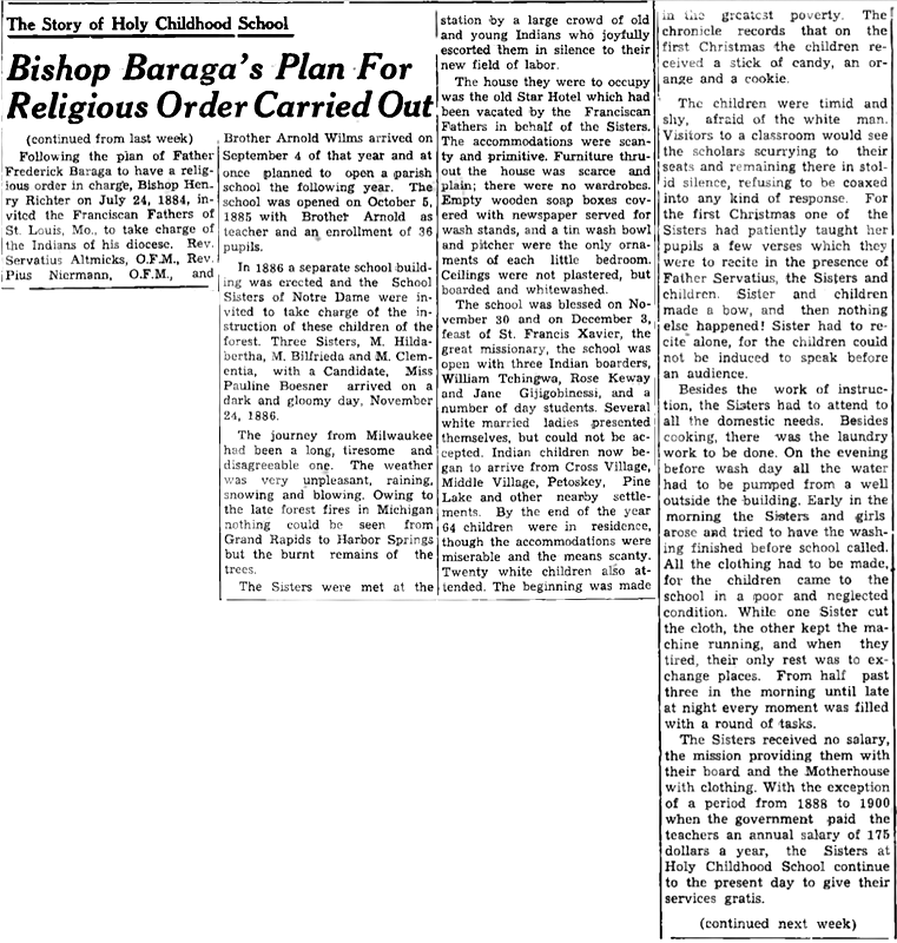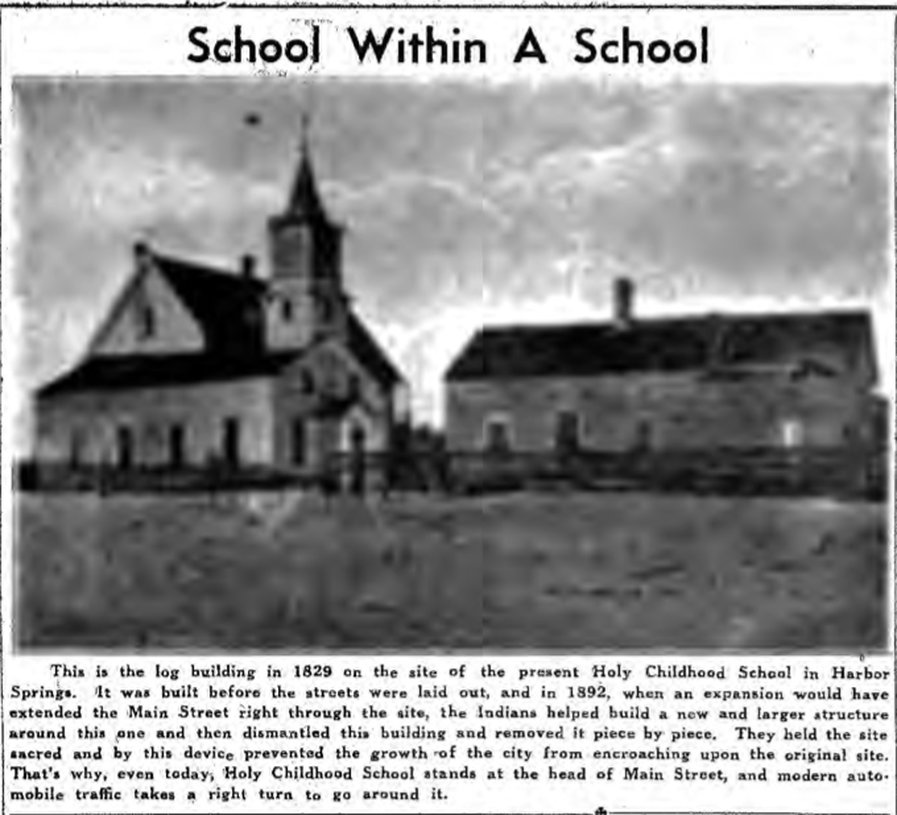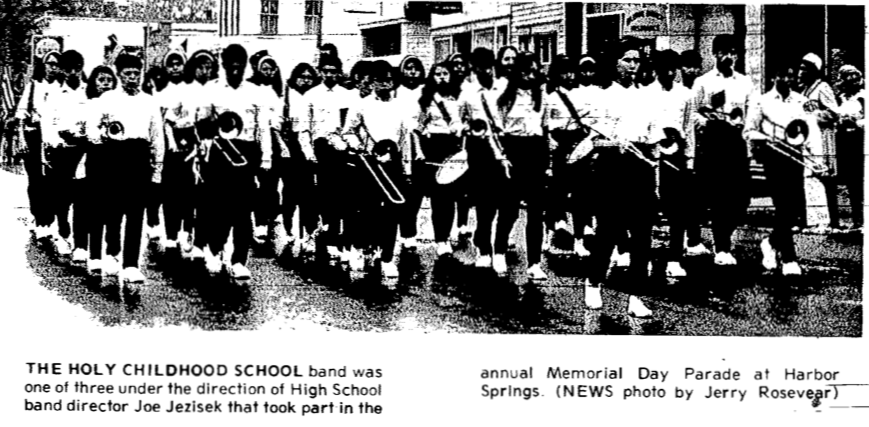Northern Mich~Mash Preserve
~ HOLY CHILDHOOD OF JESUS SCHOOL ~
(Mission School)
Located in Harbor Springs, Michigan
The design and compilation of the text and photos on this site are copyrighted 2017.
Please do not copy the photos on this site, many of which have been submitted by private individuals...
just come back and visit the site often to view the photos.
just come back and visit the site often to view the photos.
Below Clockwise: Book Bindery, Printing Office, General Work Room, Girls' Dormitory, Carpenter Shop,
The Fourth Class, Shoe Shop
The Fourth Class, Shoe Shop
14 February 1890 Photo Below: "View of Indian boys at work sawing wood on the school grounds."
L>R: Bro. Eberhard O.S.F., Bro. Arnold O.S.F., Bro Novatus O.S.F. Teacher
L>R: Bro. Eberhard O.S.F., Bro. Arnold O.S.F., Bro Novatus O.S.F. Teacher
Harbor Springs A collection of Historical Essays on page 41 has a section about "Schools" written by William Baker which included extensive information about the Indian Schools beginning with Father Peter DeJean who arrived in Harbor Springs permanently in May 1829. The school opened on 23 August 1829. The fascinating account also includes photos.
Photo/Postcard Below Labeled:
"Municipal Dock, Boat House, Catholic Church and Mission School in Harbor Springs"
"Municipal Dock, Boat House, Catholic Church and Mission School in Harbor Springs"
The Holy Childhood of Jesus School was opened in 1829 (Photo Below).
It was, however, closed from 1839 until 1884, when it reopened.
The School Sister of Notre Dame began serving the school in 1886.
The boarding school closed in 1983, but continued as a day school, daycare center, and thrift shop.
It was, however, closed from 1839 until 1884, when it reopened.
The School Sister of Notre Dame began serving the school in 1886.
The boarding school closed in 1983, but continued as a day school, daycare center, and thrift shop.
Photo Below: Harbor Springs Holy Childhood Catholic Church and School...
The following 1950 Petoskey Evening News articles seem to have been COPIED from the 1937 articles from the Emmet County Graphic; and thus not all 1950 articles have been copied and included on this web page.
July 1966 Harbor-LIte Article Below: Wanda Rose Hughey, 8, died when struck by a car
on Main Street, Harbor Springs. She would have entered third grade at Holy Childhood School that fall.
on Main Street, Harbor Springs. She would have entered third grade at Holy Childhood School that fall.
Photos Below: Photographer Karla Buckmaster
Below: Fred KIogima stated he had joined the Marine Corps for 23 years and felt he had done well there because Fred's dad had been a WWII veteran, but also because Fred had been "shaped by the strict nature of Holy Childhood Boarding School."
~ Holy Childhood of Jesus Church ~
2013
2018
Photo Above: More of Charles Dawley's remarkable videos and photography can be viewed on
Drone Photography from Charles Dawley "Up North Imaging".
Drone Photography from Charles Dawley "Up North Imaging".

















